The 18 ancient trees recognized as Vietnam Heritage Trees here are not simply natural treasures, but also "living witnesses", thousand-year-old roots silently recounting the heroic spirit of a time, preserving the sacred spirit of the mountains and rivers in every branch, leaf, and vein of wood.
The sacred souls of mountains and rivers converge under the canopy of heritage trees
Lam Kinh, also known as Tay Kinh in the past, is not only the eternal resting place of national hero Le Loi, but also a land of spiritual and spiritual gathering, a place where "spiritual land gives birth to talented people", where heaven, earth, humans and nature blend into one.
In the vast grounds of this special National Monument, 18 ancient trees have been honored as Vietnam Heritage Trees by the Vietnam Association for Conservation of Nature and Environment.
These living entities not only have special biological value, but are also the incarnation of history, the crystallization of legends and indigenous beliefs passed down through the centuries.
The banyan tree by Ngo Mon Gate, a living symbol of the strange relationship between two species of trees in Lam Kinh relic site
Right next to Ngo Mon Gate, the main entrance to the Dragon Courtyard of the ancient Lam Kinh Palace, a 300-year-old banyan tree stands tall and spreads its shade. Its canopy spreads out like a giant parasol, shading a corner of the sky, while the base of the tree is so large that it would take ten people to wrap their arms around it.
The tree roots are curved and firmly attached to the ground like dragons, with a majestic and quiet appearance, evoking a sense of sacred mystery at first sight.
But the miracle lies in the story of this banyan tree sheltering another identity: the star apple tree. According to legend, long ago, there was only one lone star apple tree by the city gate. Every season, when it bloomed and bore fruit, the star apple scent spread throughout the space, attracting birds to come.
Then, at some unknown time, those birds carried the banyan seeds and dropped them at the base of the fig tree. The banyan seeds germinated, grew, and the roots spread out to cover the fig tree trunk. The two different species of trees lived together in harmony, relying on each other like a pair of lifelong friends.
In winter, the fig fruit is red and ripe; in summer, the scent of the fig tree spreads. People affectionately call it the “fig tree”, a strange and rare image, as if nature also wants to tell a love story.
By 2007, the fig tree had gradually withered, as if giving way to its friend. People thought that this strange relationship had ended. But then, nearly 15 years later, a small fig sprout suddenly sprouted from the ground, right under the old banyan tree.
The fig tree is now about 2m tall, as if its old soul has returned, continuing to weave a lively song with its partner. Some say it is a branch left over from the old tree; others believe that the fig tree has “reincarnated” to be reborn, to return to the banyan tree in the next life.
However, that story still moves many tourists every time they visit, seeing that there is love and meaning in the trees.
But Lam Kinh is not only about that magical banyan tree. Another “divine tree”, the 600-year-old ironwood tree, has a different mission: to contribute to the restoration of Lam Kinh Main Hall.
In 2010, when the restoration project of the Main Hall was started, the lim tree, which was still green at that time, suddenly lost its leaves. No pests, no cutting, just quietly withering like a farewell.
Just a few months later, the tree died standing. What was hard to explain was that when the tree was cut down, a red sap oozed out from the dead trunk like blood. The wood was still solid, fragrant, each fiber as solid as carved stone.
The trunk of a 600-year-old ironwood tree, a “divine tree” from the sacred Lam Son forest, was brought down to be used as a pillar of Lam Kinh Main Hall, as if it had waited for six centuries to complete its historical mission. Photo: Duy Cuong
It is even more strange when measuring the ironwood tree trunk with the stone bases of the main hall, where the pillars are placed, the wooden sections all fit perfectly: the large section is used for the main pillars, the medium section is placed in the row of pillars, and the small section is placed in the porch pillars.
A tree trunk that seemed to have been “destined” to be planted 600 years ago. Without anyone telling them, everyone believed that this ironwood tree had fulfilled a historical mission, from the Lung Nhai oath-taking place to becoming a pillar to restore the ancient capital.
The tree felling ceremony was solemnly held on the anniversary of King Le Thai To's death in 2011, as a ceremony to send the spirit of the tree back to its roots. And from then on, the lim tree transformed into wooden pillars silently supporting the main hall, as if continuing to shoulder a part of the sacred soul of the mountains and rivers.
According to the Management Board of the Relic Site, this system of rare ancient trees not only creates the unique beauty of Lam Kinh, but also creates a deep attraction for many tourists from near and far.
Ms. Hoang Thi Hien, a long-time tour guide at the relic, said: “The heritage tree system in Lam Kinh is 300 to 400 years old, some trees are up to 600 years old. What is special is that these trees are located right next to ancient structures, which makes visitors very excited. Many people often hug the trees, feel the coolness and solidity of the wood, and say that they feel extremely relieved and refreshed. Perhaps thanks to that, Lam Kinh attracts more and more people to return.”
The "smiling" guava and the spiritual energy of the emperor's tomb
Behind Lam Kinh Palace is the tomb of King Le Thai To, the final resting place of the man who initiated the Lam Son uprising, opening a glorious dynasty.
Amidst the green forest, the tomb is humble but solemn, surrounded by hundred-year-old trees, 600-year-old sui trees, and over 300-year-old glutinous oak trees, all bearing the majestic aura of the sacred land of Thanh.
However, the tree that attracts the most attention is a nearly 100-year-old guava tree located on the right side of the mausoleum entrance. From the outside, the tree is about 3m tall, with a small trunk but a soft, curving shape like a dragon, with branches extending evenly in all four directions and green leaves all year round. The special thing is that the guava fruits are only the size of a thumb, but are strangely sweet and fragrant, as if containing the spiritual energy of heaven and earth.
The ancient guava tree next to King Le Thai To's mausoleum, shaped like a dragon, once surprised scientists with its strange "smiling" phenomenon. Photo: Nguyen Linh
Since the early 2000s, this guava tree has been called the “smiling guava tree” by locals and tour guides. Whenever someone touches or lightly scratches the tree trunk, all the branches and leaves immediately shake as if they are… smiling. But when they stop, the tree stands still.
The seedlings that were cut from the mother plant and planted elsewhere did not have this reaction. This strange phenomenon caused many scientists to get involved.
In 2003, during a field survey, researchers discovered a strange phenomenon: every time someone lightly touched the guava tree trunk, the bark immediately warmed up and transmitted a slight electric current to the branches and leaves, a biological reaction never recorded in any guava variety before.
Legend has it that this guava tree was donated by Mr. Tran Hung Dan, a native of Nam Dinh , in 1933 along with 4 stone elephant statues and 2 camphor trees. No one knows why this guava tree alone has such a sacred shape. Every guava season, the tomb caretaker still picks the fruit to offer to the king's tomb, as a quiet but respectful ritual.
A tourist once tried placing his hand on the tree trunk, closing his eyes and meditating. After a while, he shared that he felt like he was flying, his mind spinning, his body feeling light. Science cannot explain it, but that feeling is real, as if there is an invisible connection between the person and the tree from some sacred realm.
Lam Kinh is not only a historical relic complex, but also a special sacred realm, where ancient trees are not simply plants, but the living memory of a nation.
The ironwood tree, the banyan tree, the fig tree, the sui tree, the oak tree, and especially the "smiling" guava tree, all appear as mascots, silently guarding the sacred soul of the land of origin.
They stand there, silently through many stormy seasons, silently witnessing the changes of the times, and transmitting a wordless energy, the energy of history, of the earth and sky, of the people's hearts.
So that when each person steps into Lam Kinh, they not only come to admire the ancient architecture, but also to feel a silent spiritual energy spreading from the heritage trees, where the past seems to never sleep.
Source: https://baovanhoa.vn/van-hoa/huyen-thoai-duoi-tan-co-thu-khi-cay-lim-roi-le-cay-oi-mim-cuoi-154857.html


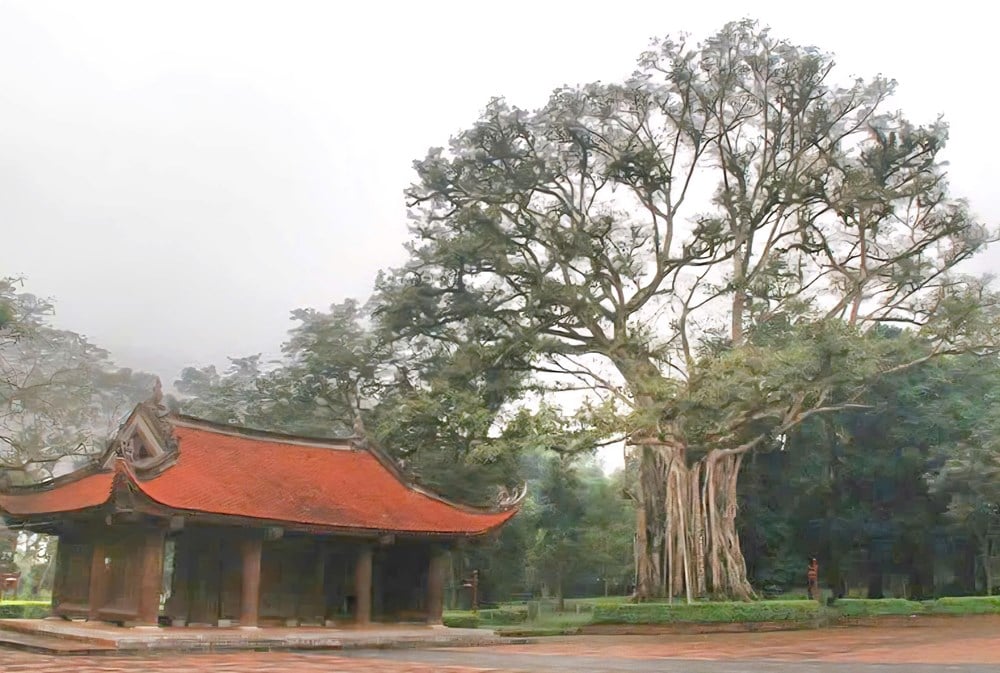
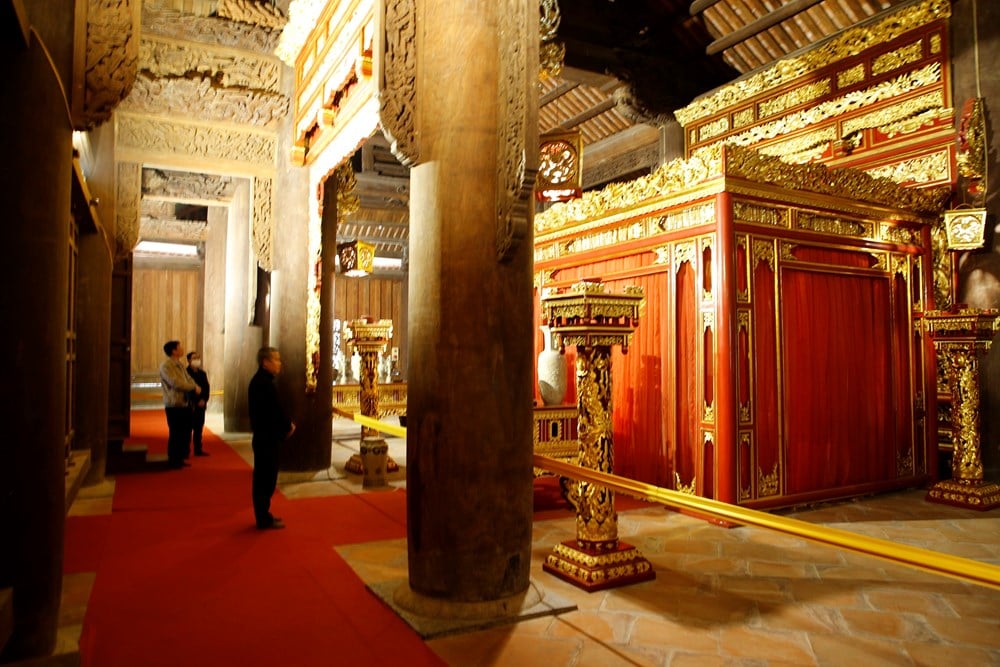
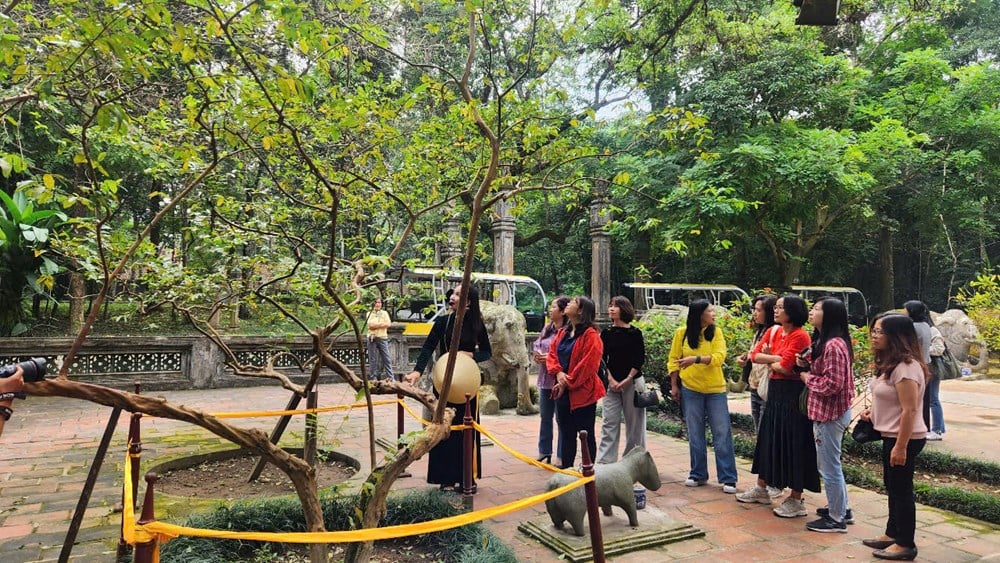






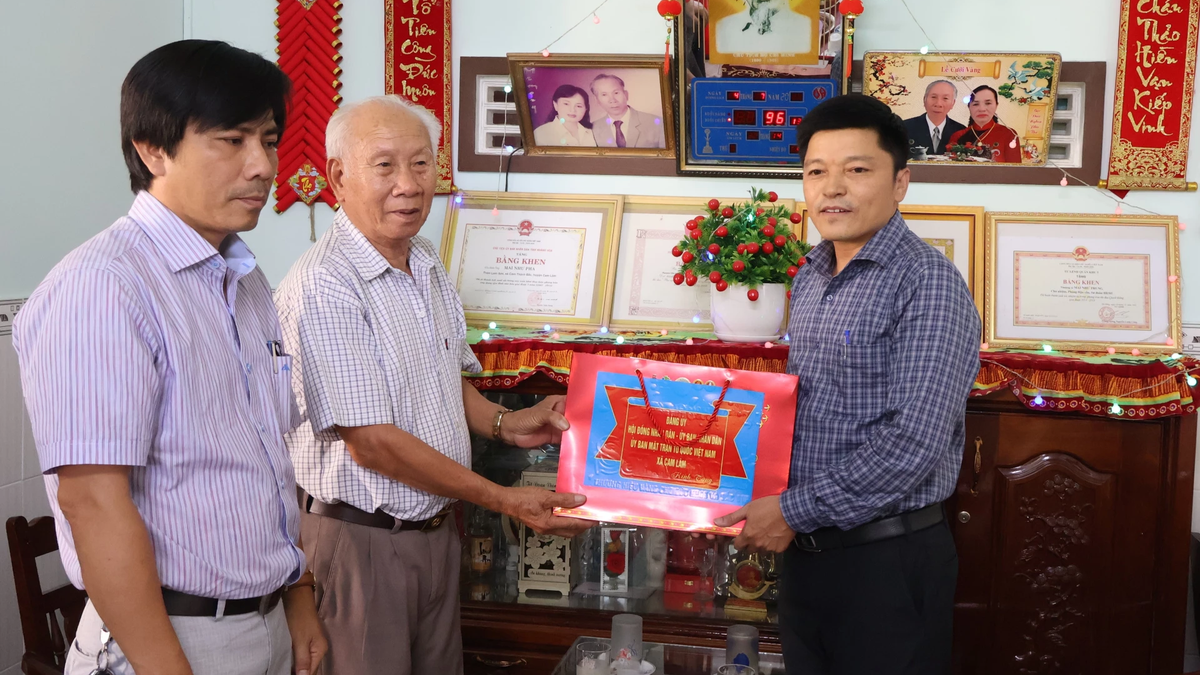
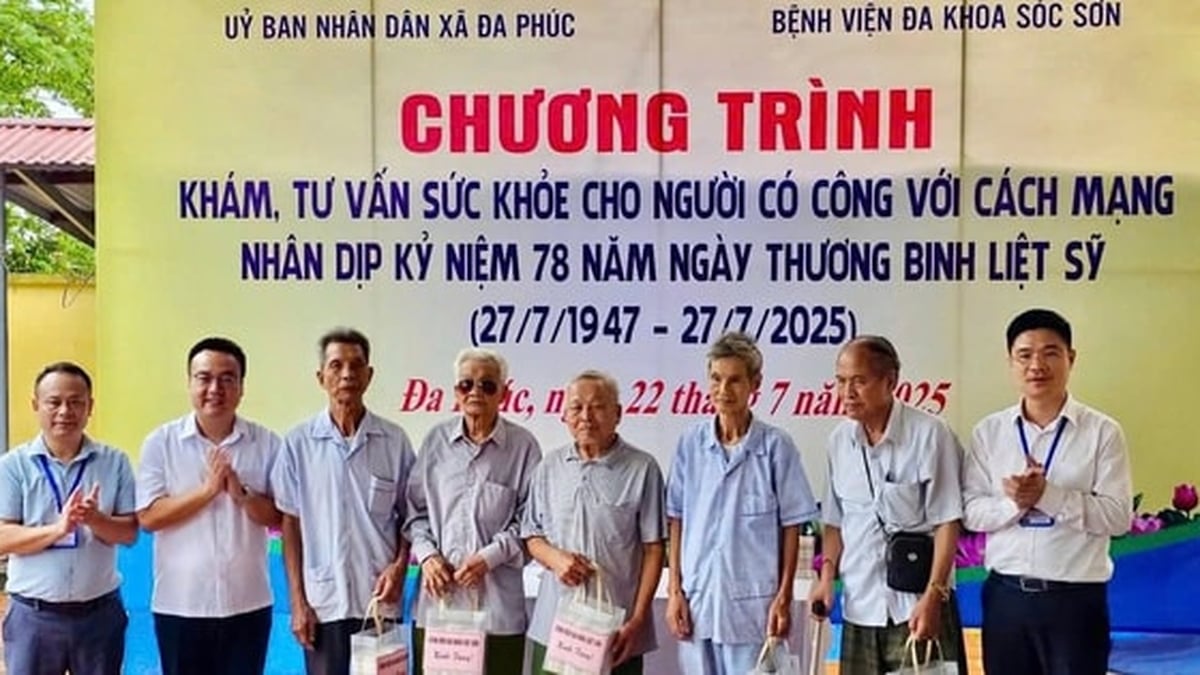






















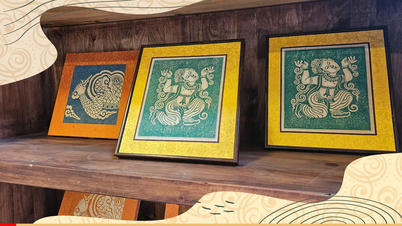

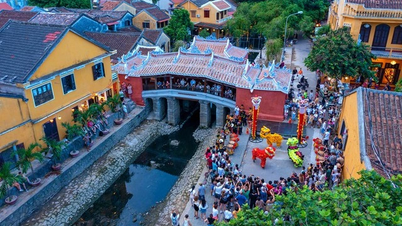

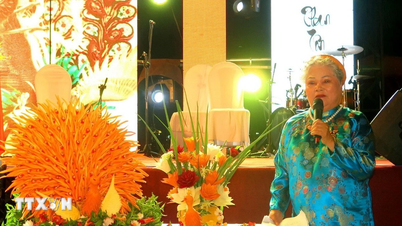

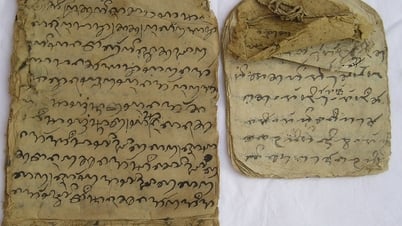


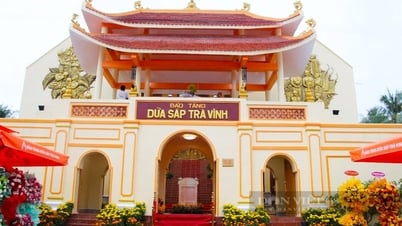



























































Comment (0)